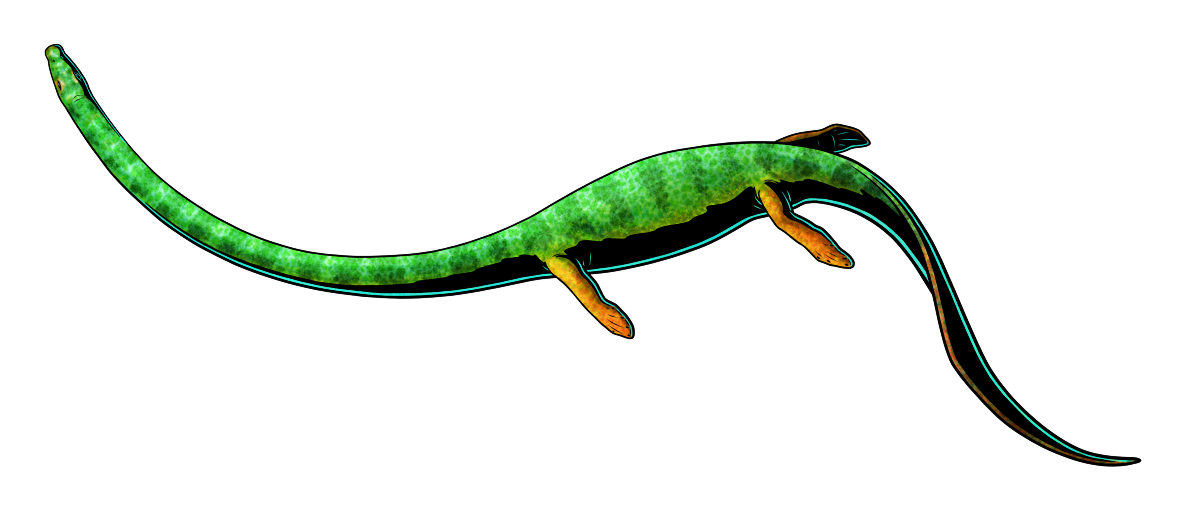Dinocephalosaurus orientalis was a fully aquatic protorosaur reptile living in what is now southwest China during the mid-Triassic, about 244 million years ago.
Up to 6m long (~19’8″), it had a long serpentine body with paddle-like limbs and an especially elongated neck – but despite the superficial similarities to its semi-aquatic cousin Tanystropheus, Dinocephalosaurus’ long neck appears to have been independently evolved.
Much like the similarly-shaped elasmosaurs, its neck may have had a “stealth” function, allowing it to bring its jaws closer to targets before the rest of its body was visible, then using side-to-side snapping bites to catch its prey in its interlocking “fish-trap” teeth.
A preserved well-developed embryo inside one specimen also suggests that Dinocephalosaurus gave birth to live young, making it one of only two archosauromorph lineages known to have ever evolved this reproductive strategy.

